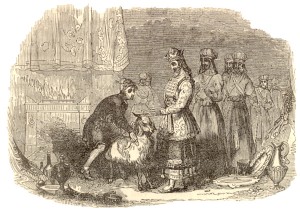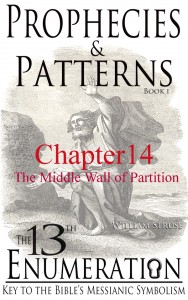 Did you know that nearly 2000 years when Yeshua paid the price for our sins (thus reconciling us to YHWH), there was a wall built around the house of YHWH which prevented gentiles, on pain of death, from approaching the presence of God. That’s correct, at that time Gentiles were tough out of luck. The apostle Paul described it this way:
Did you know that nearly 2000 years when Yeshua paid the price for our sins (thus reconciling us to YHWH), there was a wall built around the house of YHWH which prevented gentiles, on pain of death, from approaching the presence of God. That’s correct, at that time Gentiles were tough out of luck. The apostle Paul described it this way:
…That at that time ye were without Christ, being aliens from the commonwealth of Israel, and strangers from the covenants of promise, having no hope, and without God in the world: (Ephesians 2:12)
But something happened that famous Passover week which changed the history of the world and gave the Gentiles the privilege to approach the presence of YHWH. This week let’s look at how Yeshua’s death and resurrection forever changed the dynamics of how mankind approaches their Creator. This Passover season I hope to give you another way of seeing the love and mercy YHWH showed mankind by becoming our Yeshua (Salvation of YA).The following is a excerpt from my book The 13th Enumeration: Key to the Bible’s Messianic Symbolism.
 Chapter 14:
Chapter 14:
The Middle Wall of Partition
“That at that time ye were without Christ, being aliens from the commonwealth of Israel, and strangers from the covenants of promise, having no hope, and without God in the world:
But now in Christ Jesus ye who sometimes were far off are made nigh by the blood of Christ. For he is our peace, who hath made both one, and hath broken down the middle wall of partition between us.” —Ephesians 2:12–14
If I’ve accomplished my purpose in writing about the 13th Enumeration, by now you’ve recognized the Messianic symbolism associated with the numbers 13 and 14 as found in the biblical record. These “Messiah factors,” as I like to call them, are like a prophetic thread woven into the Bible’s fabric which shows YHWH’s desire to reconcile mankind to Himself through Yeshua, the Messiah promised in the Scripture from the very beginning.
In this final chapter, I would like to look at one last aspect of the Messiah factors as they relate to the Second Temple era, that exciting time when the Jewish people returned from Babylonian exile to rebuild the temple and Jerusalem. By all accounts, the Second Temple, as finally reconstructed by Herod, was a truly impressive structure. So impressive, in fact, that we find in Mark 13 one of Yeshua’s disciples commenting on its grandeur. It’s beyond doubt that the temple was important to the Jewish people, but is it also possible that within its design were hidden the symbols of the Messiah’s redemptive purpose? I believe so; see what you think.
The Number 13 in Jewish Thought
It may come as a surprise to some, but Jewish thought does not attach the same negative superstition to the number 13 as does the rest of the world. In fact, 13 finds great prominence in Rabbinic traditions related to both the Torah and the Second Temple. Continue reading
